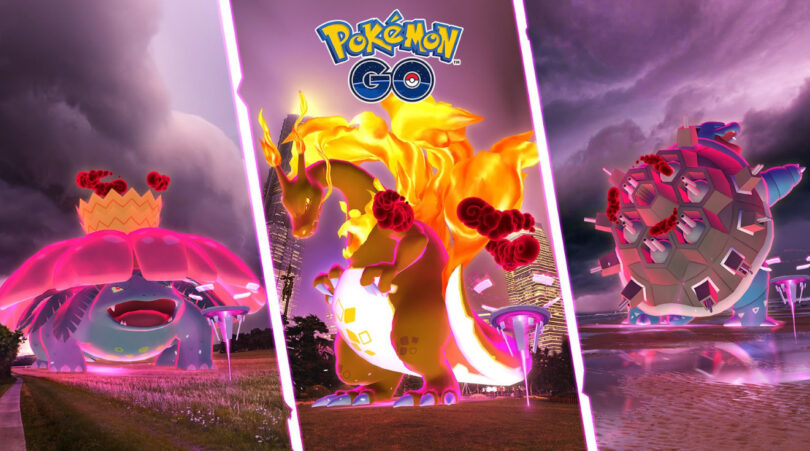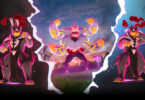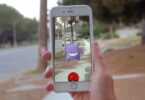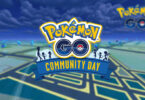The Evolution of Pokémon Go: From 2016 to 2025
When Evolution of Pokémon Go was first released in July 2016, it revolutionized the way people interacted with mobile games, blending augmented reality (AR) with real-world exploration. Developed by Niantic in collaboration with The Pokémon Company and Nintendo, the game quickly became a cultural phenomenon. Players around the globe took to the streets to catch virtual creatures, join teams, battle in gyms, and participate in special events. Over the years, Pokémon Go has undergone significant transformations, evolving in terms of gameplay, technology, social features, and cultural impact. This article traces its journey from the initial launch in 2016 to the present day in 2025.
The Launch Year: 2016 – A Global Phenomenon Begins
The Concept and Release
Pokémon Go launched in July 2016 with a simple yet powerful concept: catch Pokémon in the real world using your smartphone’s GPS and camera. Players could explore their neighborhoods, visit PokéStops, and capture wild Pokémon that appeared on their screens via AR technology. The game was initially released in select countries, but its popularity led to rapid expansion.
The Viral Craze
The first few months of Pokémon Go were nothing short of historic. Millions of players flooded parks, city streets, and landmarks to hunt for rare Pokémon. Social media buzzed with stories of unexpected encounters, friendships forming over raids, and even marriages sparked by the game. Within a week of release, it became one of the most downloaded mobile games ever.
Early Challenges
Despite the overwhelming success, Pokémon Go faced several issues at launch: server crashes due to high traffic, limited features, and safety concerns with distracted players. Nonetheless, the novelty of catching Pokémon in real-world locations kept players engaged.
2017 – Stabilization and First Major Updates
Introduction of Generation II
In 2017, Niantic expanded the Pokémon roster by adding Generation II Pokémon from the Johto region. This marked the first major content update, giving players new creatures to hunt and new evolutions for existing Pokémon.
Raids and Legendary Pokémon
Raid Battles were introduced, bringing cooperative gameplay to the forefront. Players could team up to defeat powerful Pokémon in gyms, and for the first time, Legendary Pokémon such as Lugia, Articuno, and Mewtwo became obtainable. This feature re-energized the player base by encouraging group play.
Events and Community Days
Niantic began organizing themed events and launched Community Days, monthly gatherings where specific Pokémon appeared more frequently. These events cultivated a stronger sense of community and kept players returning to the game.
2018 – Social Features and AR Enhancements
Friends and Trading
One of the most requested features—friends and trading—was added in 2018. Players could send gifts, trade Pokémon, and build friendships to earn in-game bonuses. This enhanced the social dimension of the game significantly.
PvP Teasers
While full-scale player-versus-player (PvP) battles were not yet introduced, Niantic began hinting at their development. The anticipation for head-to-head Pokémon battles grew steadily throughout the year.
AR+ and Immersive Gameplay
AR+ mode improved the augmented reality experience by allowing players to approach Pokémon more realistically. Creatures reacted to players’ movements, creating a more immersive catching experience.
2019 – Player Versus Player Battles and Team Rocket
PvP Battles Become a Reality
In late 2018 and early 2019, the long-awaited Trainer Battles system was launched. Players could challenge friends or nearby trainers to battles, bringing a new competitive element to the game.
Team GO Rocket Invasion
Team GO Rocket debuted, adding a narrative twist. Players could battle Rocket Grunts at invaded PokéStops, rescue Shadow Pokémon, and purify them. This feature introduced a fresh layer of strategy and story-driven content.
Growing Esports Potential
With the introduction of official PvP tournaments and the Pokémon Go Battle League (GBL), the game began to explore competitive esports territory, appealing to both casual and hardcore players.
Read More: Hidden Features in Pokémon Go You Probably Missed
2020 – Adapting to a Changing World
The COVID-19 Impact
The global pandemic in 2020 posed a unique challenge for a game built around outdoor exploration. Lockdowns and social distancing measures threatened to halt its momentum.
Remote Raiding and Accessibility
Niantic adapted by introducing Remote Raid Passes, allowing players to join raids from home. The game also increased the interaction distance for PokéStops and gyms, ensuring players could continue participating safely.
Virtual Events
The first-ever global virtual Pokémon Go Fest was held in 2020, allowing players worldwide to participate without leaving home. This proved to be a successful experiment that Niantic would continue in the future.
2021 – Hybrid Play and Continued Growth
Blending Outdoor and Remote Play
As restrictions eased, Niantic adopted a hybrid approach, balancing in-person events with remote play options. This flexibility ensured that players of all types could enjoy the game.
Expansion of Seasons and Storylines
Seasons became a central feature, with rotating themes and story-driven content involving Professor Willow and various in-game characters. This kept the narrative engaging and gave players goals to work toward.
AR Mapping and Exploration Bonuses
Players were encouraged to help map real-world locations through AR scanning, hinting at Niantic’s broader ambitions in augmented reality infrastructure.
2022 – Technological Upgrades and Cross-Platform Integration
Better AR and Visual Enhancements
Niantic upgraded the AR engine, leading to smoother animations, realistic Pokémon interactions, and improved camera integration. Players could now take more lifelike photos with their Pokémon.
Cross-Platform Collaborations
Collaborations with other games and media, including the mainline Pokémon titles, became more frequent. Pokémon Go began serving as a bridge between different Pokémon universes.
Revamped Gym and Raid Mechanics
Gyms and raids received quality-of-life updates, including better matchmaking, lobby improvements, and more varied boss rotations.
2023 – Deeper Integration of the Metaverse and AI
Augmented Reality Meets the Metaverse
With the growing trend of AR and virtual spaces, Pokémon Go started experimenting with persistent AR worlds, where Pokémon could appear in shared spaces visible to multiple players simultaneously.
AI-Powered Events and NPC Interactions
Artificial intelligence was integrated to make NPC trainers more dynamic and responsive. Events became more adaptive, offering challenges tailored to players’ habits and locations.
Enhanced Social Networking
Clubs and expanded friend systems made the game feel more like a global social platform centered around Pokémon.
2024 – Pokémon Go as a Lifestyle
Health and Fitness Integration
Pokémon Go introduced advanced fitness tracking, syncing with wearable devices to turn walking, cycling, and even jogging into a more rewarding experience. Players could hatch eggs, earn rewards, and unlock bonuses based on physical activity.
Regional Expansion and Tourism Partnerships
More countries partnered with Niantic to use Pokémon Go as a tourism driver. Rare Pokémon spawns were tied to historical landmarks and cultural events.
Competitive Scene Matures
The Pokémon Go Championship Series became more established, with larger tournaments, online qualifiers, and global recognition of top trainers.
2025 – The Current State of Pokémon Go
Seamless AR Glasses Integration
By 2025, Pokémon Go has become compatible with mainstream AR glasses, allowing players to experience the game without constantly checking their phones. Pokémon now appear as if they truly exist in the world.
Dynamic World Events
The game now features real-time world events affected by weather, holidays, and even player collaboration on a global scale. Massive cooperative challenges have become a hallmark of the game.
Expansive Pokémon Roster
Nearly all generations of Pokémon are now included, along with regional variants, special forms, and cross-game exclusives. The roster continues to grow as new mainline Pokémon titles release.
A Mature Ecosystem
Pokémon Go has transitioned from a viral trend to a mature platform with millions of active users worldwide. It serves as a game, a fitness app, a social network, and even an educational tool in some contexts.
Cultural Impact and Legacy
Building Communities
From its launch to now, Pokémon Go has fostered a unique sense of community. Players from different backgrounds come together for events, raids, and meetups, often forming lasting friendships.
Boosting Local Economies
Businesses near popular PokéStops and event locations have benefited from increased foot traffic, and local tourism has seen positive impacts during large events.
Inspiring AR Development
The success of Pokémon Go paved the way for a wave of AR-based games and apps. It demonstrated the potential of blending virtual and real-world experiences.
The Road Ahead
As of 2025, Pokémon Go shows no signs of slowing down. With continuous updates, integration with emerging technologies like AI-driven NPCs, advanced AR wearables, and even potential VR elements, the game remains at the forefront of mobile gaming innovation. Future possibilities include deeper cross-game connectivity with upcoming Pokémon titles, more region-specific lore, and even AI-generated events that adapt to players’ behaviors in real-time.
Conclusion
From its Evolution of Pokémon Go explosive launch in 2016 to its evolved, immersive state in 2025, Pokémon Go has undergone an incredible transformation. What started as a novel AR experiment has grown into a global platform that combines gaming, exploration, fitness, and community building. It has adapted to global challenges, embraced new technologies, and retained its place as one of the most iconic mobile games in history. The journey of Pokémon Go reflects not only the evolution of a game but also the evolution of how people connect with their world and each other through technology.







